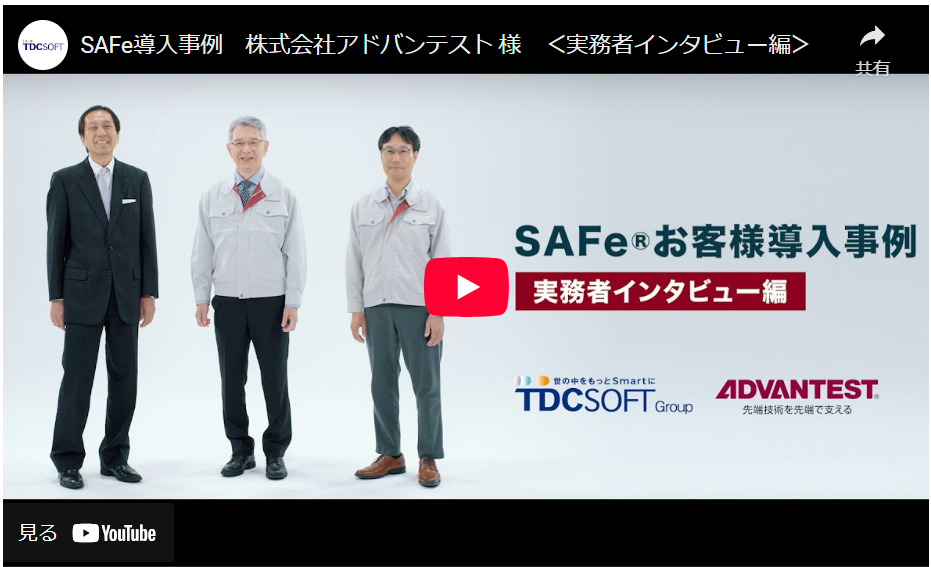SAFe® Enterprise Agile Services
Summary
We provide an education menu that covers the entire organization from the executive level to development members in order to properly understand Agile from its mindset to its practical methods.
Digital Transformation (DX) and Enterprise Agile
As various companies are working on digital transformation (DX) to respond to rapid changes in the business environment, Enterprise Agile is gaining attention as an approach to promote DX in large organizations. Enterprise Agile applies traditional Agile methodologies often applied to IT development to the business and management layers to improve business agility – the ability of large organizations to deliver value quickly and establish competitive advantage.
Challenges of Enterprise Agile Practices in Japanese Companies
However, without a proper understanding of Enterprise Agile, it is not easy to implement in large organizations. Successful implementation of Enterprise Agile requires setting a vision based on the company’s business strategy, transforming the business model using digital technology, and developing leaders to drive change and raise awareness among all employees.

TDC SOFT's Enterprise Agile Implementation Approach
Not all companies that work on Enterprise Agile start from the same place. In order to tackle it from any state, TDC SOFT Inc. has redefined Enterprise Agile based on the Scaled Agile Framework® (SAFe® ), an enterprise agile framework composed from the practical experience of 20,000 companies, mainly in Europe and the United States, to help organizations and By strengthening our approach to team implementation, we aim to make Enterprise Agile a success and improve business agility in companies and organizations.

Features of 2-way approach
-
What is Agile? A “for Team” approach that starts small and achieves success first with a “for Team” approach, and then expands to the entire organization.
-
Practice-accelerated “for Enterprise” approach where consultants accompany Agile development teams and Agile coaches who lead by example
-
Providing unique content to provide awareness and learn how to bridge the gap between leading Western companies and Japanese companies’ practices.
Cognition and input phase

notice
Visualize the current state (issues and crises) and “why” do we need to work on them? and understand the source of action.
Find out how
Through the training, participants will understand the reality that improvements are not being made with the old management methods, learn about the new way of doing things, the way we are doing things globally, and learn the knowledge and methods for change.
Preparation Phase for Enterprise

Understanding Value Streams
The value that the company/organization is providing is expressed in the process, and the target for starting an Enterprise Agile effort is determined. A key element is to find the places in the enterprise organization where it is easiest to proceed, where it is easier to get the cooperation of internal stakeholders, where it is easier to achieve success, and where the customer value is higher.
Create a vision and what it should be.
Define goals in delivering value to customers as a source of action, such as dozens or hundreds of people. It is not a simple numerical sales target, but an essential strategy that considers what differentiates you from your competitors. The strategy should be based on the essential question, “What is the element that differentiates us from our competitors?
Create a roadmap
What are the tasks necessary to achieve the vision and Tobe? Define the sequence and timing of the work to be provided, and obtain a common understanding of how the people involved in the organization will proceed toward the Tobe.
involve
New initiatives in the midst of existing work are subject to various barriers (lack of resources and leeway, anxiety about change). We organize a promotion organization, visualize the barriers, and promote understanding of the change through workshops and training to increase the number of colleagues.
Preparation Phase for Team

Defining Value
What is the first value that will serve as the trigger for future initiatives at the organizational level? and define the vision, mission, and values that will drive these efforts. The key elements are to define a goal (definition of success) that is likely to be successful and that is shared by stakeholders.
Building a Team
Who do we need to succeed? to gather human resources, develop a common understanding of the vision, mission, and values, and begin working toward the goal. Visualizing the efforts is an important element to eventually roll out to the organization.
Success.
Celebrate crossing the goal, share it with the organization, and make it a major stepping stone toward expansion.
enlarge
We will consider and implement increasing the number of team units and increasing the track record of success or expanding it to the organization.
We will assess the cognitive status of the change initiative and explore ways to develop the initiative as we move forward.
When deploying the organization anew, we will again practice understanding the value flow of the preparation phase, and will not stop practicing on a team-by-team basis, but will prepare to deploy the organization.
Organizational Practice Phase

Put into practice (plan, measure, reflect)
Since setting high goals at the beginning is likely to lead to exhaustion and disintegration, we will continue to practice for change, gradually increasing the number of initiatives that can be improved while understanding the current state of the organization.
We will implement a system that enables the team as well as the organization to continuously reflect on their efforts and acquire a growth cycle.
Examples of Enterprise Agile Initiatives
-

JSR Corporation
Challenging R&D Productivity for DX
Practicing Enterprise Agile Development with SAFe to Ensure Transparency and Accelerate Development in R&D in the Manufacturing Industry -

Advantest Corporation, Management Edition
In the management section, we introduce the factors that led to the adoption of SAFe and how it was promoted through interviews.
-

Advantest Corporation, Practitioner Edition
Interviews with the actual person in charge of promoting the project to introduce what they were aware of and what they tried to do during the introduction process, as well as their future initiatives.
-
SAFe® (Scaled Agile Framework®) is a registered trademark of Scaled Agile, Inc. in the United States and other countries.
-
All company and product names mentioned herein are trademarks or registered trademarks of their respective companies.
-
TDC SOFT Inc. is a Scaled Agile Gold Transformation Partner in the Scaled Agile Partner Program of Scaled Agile, Inc.
